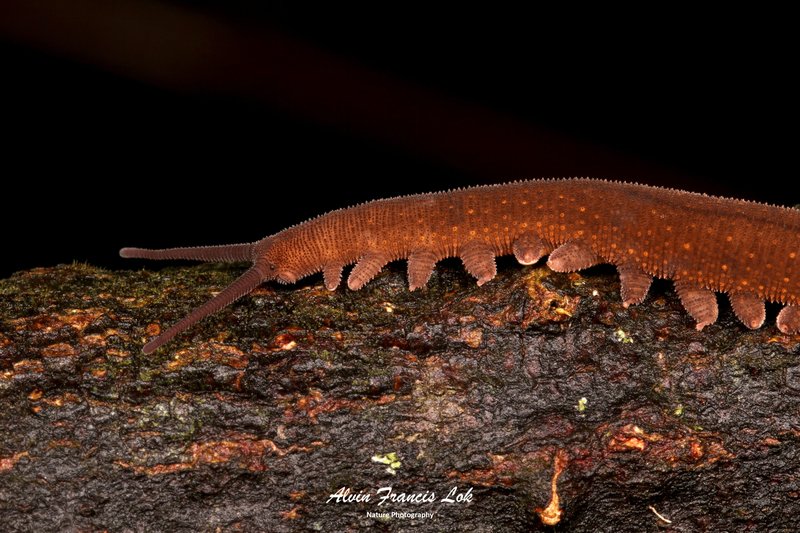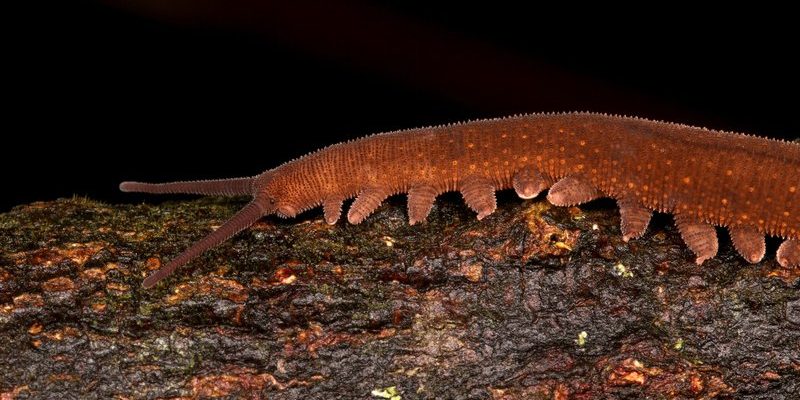
Velvet worms belong to a group called Onychophora. They’re striking with their velvety texture, many limbs, and cute faces that might make you think they’re a cross between a caterpillar and an alien. While they might look odd and are less well-known, they’re essential players in their environments. Let’s dive into why these fascinating creatures are so important for biodiversity and what that means for our planet.
What Are Velvet Worms?
Velvet worms are unique creatures found primarily in humid, tropical regions, often hiding out under leaf litter or in damp soil. They have soft bodies covered in a velvety layer of cuticle, which helps them retain moisture. These little critters can grow up to about four inches long and typically have multiple pairs of limbs, giving them a caterpillar-like appearance.
One of the most interesting things about velvet worms is how they hunt. They’re not your typical predators. Instead of chasing after their prey, which can include small insects and other invertebrates, they rely on a sticky slime they produce. When hunting, they shoot this slime at their target, ensnaring it and making it easier to consume. This hunting method is not just fascinating; it’s a testament to how specialized and adapted these creatures are to their environments.
What’s even more remarkable is their reproduction. Velvet worms practice a type of reproduction called “ovoviviparity,” where the eggs develop inside the mother, and she eventually gives birth to live young. This means that, unlike many insects that lay eggs that are left to fend for themselves, velvet worms provide a more nurturing approach. This parental investment is vital for their survival, particularly in harsh habitats.
The Role of Velvet Worms in Ecosystems
You might be wondering what role velvet worms play in their ecosystems. Well, they act as both predators and prey. As predators, they help control populations of smaller invertebrates, keeping the ecosystem balanced. Every time a velvet worm catches its meal, it helps ensure that some species don’t overpopulate, which can lead to a decline in plant health or other animals.
On the flip side, velvet worms are also important food sources for a variety of predators. Birds, reptiles, and even larger insects rely on these tiny creatures for sustenance. This dual role makes them a critical part of the food web, showcasing how interconnected life is in nature.
But here’s the thing: If velvet worms start disappearing due to habitat loss or climate change, it could knock things out of whack. With fewer velvet worms, their prey might become too abundant, and the natural balance of that ecosystem could suffer, showing us just how integral they really are.
Velvet Worms and Soil Health
Soil health is another area where velvet worms shine. They contribute to the overall health of the soil ecosystem. As these worms move through the soil and organic matter, they help aerate it, allowing for better water infiltration and root growth. This process is crucial for maintaining healthy plants which, in turn, support various animal species.
Moreover, when velvet worms feed on decomposing organic matter, they aid in nutrient cycling. This means they help break down materials, returning essential nutrients back into the soil. Healthy soil leads to healthy plants, which are the foundation of most ecosystems.
Consider them the unsung heroes of the damp forest floors, quietly working away while most of us don’t even notice them. Their contribution to soil health highlights the complex interactions that sustain life on Earth.
Conserving Velvet Worms and Their Habitats
With their unique contributions to biodiversity, it’s crucial to think about how we can protect velvet worms and their habitats. Many species are threatened by habitat destruction, climate change, and pollution. Conservation efforts are vital to ensure these fascinating creatures endure for future generations.
You might be wondering how you can help. Supporting local conservation initiatives, such as protecting forest habitats and spreading awareness about these lesser-known animals, can go a long way. Even simple actions, like reducing pollution and being mindful of our ecological footprint, contribute to their survival.
Additionally, promoting sustainable land use practices can help maintain the moist environments that velvet worms need to thrive. By prioritizing conservation, we not only protect these unique creatures but also safeguard the ecosystems that depend on them.
Scientific Research and Velvet Worms
Scientists have a keen interest in velvet worms because they can provide insights into evolutionary biology. Their unique features and ancient lineage help researchers understand how different species adapt to various environments. Essentially, studying velvet worms can reveal important clues about the history of life on Earth.
Research on these creatures also has implications in fields like medicine and biotechnology. Their unique slime, for instance, has potential applications in medicine due to its adhesive properties. As scientists explore the capabilities of velvet worms, they may uncover solutions that can benefit humanity.
In this way, velvet worms serve not only as a symbol of biodiversity but also as a reminder of how much we can learn from nature. Protecting them has the potential to yield scientific advancements that benefit us all.
In closing, velvet worms are more than just curious creatures; they are vital contributors to biodiversity and ecosystem health. By controlling populations, aiding in soil health, and serving as research subjects, they play significant roles in their environments. Like hidden gems in the tapestry of life, they remind us that every organism, no matter how small or odd it may seem, has a role to play.
As we navigate our complex relationship with nature, let’s not forget about the velvet worms—the quiet champions of biodiversity. Protecting their habitats not only preserves their existence but also maintains the delicate balance of life on our planet. So, the next time you think about biodiversity, remember the velvet worm and the important part they play in our world.

